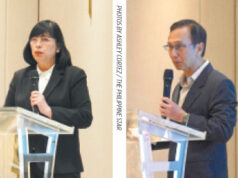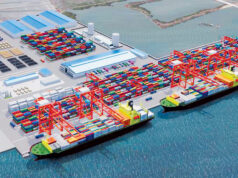The Philippines is one of Australia’s longest-standing bilateral partners, according to the Web site of the Australian Embassy in the Philippines. With these ties maintained and strengthened for more than seven decades, both countries continue to enjoy its fruitful partnership in the areas of defense, security, law enforcement, trade, business, education, development assistance, and disaster preparedness.
The formal relations between Philippines and Australia began in May 1946, when the first Consulate General of Australia was established in Manila. In 1957, an Australian Ambassador to the Philippines was appointed. Then, in 1962, the Philippines opened an embassy in Canberra, Australia’s capital.
From these initial moves, the friendship between the two gradually grew through time. The cooperation between the two countries was evident in some significant events in their shared history.
In a post by the Australian Embassy on the commemoration of 70 years of Philippines-Australia friendship back in 2016, it was recalled that over 4,000 Australian service personnel fought beside Filipino and allied forces in World War II; and Australian medical mission teams worked with other Filipino and international humanitarian communities in the aftermath of Typhoon Yolanda in 2013.
Moreover, Australia’s cooperation was more recently seen in 2017 during the Marawi City siege when “the Australian Government stepped up its military and intelligence cooperation with the Philippines to help combat the regional terrorist threat.”
“The Australian Defence Force provided surveillance support and counter-terrorism specific training to the Armed Forces of the Philippines,” Australia’s Department of Foreign Affairs and Trade (DFAT) wrote on its Web site.
Another remarkable highlight of these ties is the signing of the Joint Declaration on Philippines-Australia Comprehensive Partnership on Nov. 18, 2015, in an effort to further deepen their bilateral links.
“This Comprehensive Partnership Joint Declaration highlights the enduring nature of the Australia-Philippines relationship and demonstrates our commitment to strengthen and expand our relationship in a manner that is mutually beneficial,” the declaration states.
In addition, the joint declaration outlines the commitment of the two countries to build up its political and economic relations, as well as to further cooperate in defense, law and justice, education, and development.
In keeping these ties, the two countries hold regular meetings. According to DFAT, these include: the Foreign and Trade Ministers’ meeting (the Philippines-Australia Ministerial Meeting or PAMM) and associated PAMM business dialogue and senior officials’ meeting; counter-terrorism consultations; annual joint defense cooperation consultations; agriculture forum; strategic dialogue; and high level consultations on development cooperation.
The two countries also “share common perspectives on many regional, economic and security issues”. Philippines and Australia participate in several fora such as the East Asia Summit (EAS), Asia-Pacific Economic Cooperation (APEC), and the Association of Southeast Asian Nations (ASEAN) Regional Forum.
Philippines-Australia ties are also marked with Australia’s willingness to help its neighbor and friend through its Official Development Assistance, or ODA, to the country. DFAT’s Web site shows that the total ODA Estimate Outcome in 2018-2019 amounted to $82.8 million, while its total ODA in 2019-2020 will be an estimated $79.7 million. At present, this financial aid is “designed to meet the key objectives of inclusive economic growth, effective governance, and peace and stability”.
The ODA supported the implementation of the Sustainable Livelihood Program that “helped 1.3 million families between 2011 and 2016 to find employment or start an enterprise”.
The ODA also funded the Basic Education Assistance for Muslim Mindanao Program that “contributed to the improvement of education quality in the [formerly] Autonomous Region in Muslim Mindanao”.
The steady relations between these two countries are not only maintained through diplomatic activities but also through ‘people-to-people links’. In areas of trade, investment, cultural exchange, education, tourism, and migration, links have been forged between the Filipinos and Australians.
The DFAT adds that “[s]ignificant numbers of Filipinos have immigrated to Australia since the 1960s, and Filipinos remain one of the fastest growing immigrant communities in Australia.” In a speech by Australian Ambassador to the Philippines Steven James Robinson last January, he noted that “over 250,000 Filipinos now live in Australia, the fifth highest of any grouping, many of them dual nationals.”
In terms of education, the links between the two countries are growing, with Australia being “the top destination for tertiary students from the Philippines who choose to study abroad.” The DFAT wrote that “[t]here were 8,506 Filipino students studying in Australia in 2017.”
As the Philippines-Australia ties mark its 75th year in 2021, Mr. Robinson commits to strengthening and enhancing the relations between the two countries.
He recognized that “Australia and the Philippines share a relationship which is both broad and deep.
“Over my term here, I hope to continue to strengthen this relationship, including with senior ministerial visits over the coming year,” he said. — Adrian Paul B. Conoza



